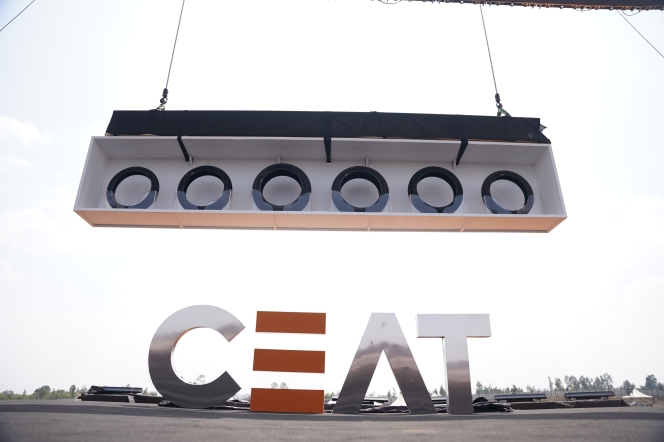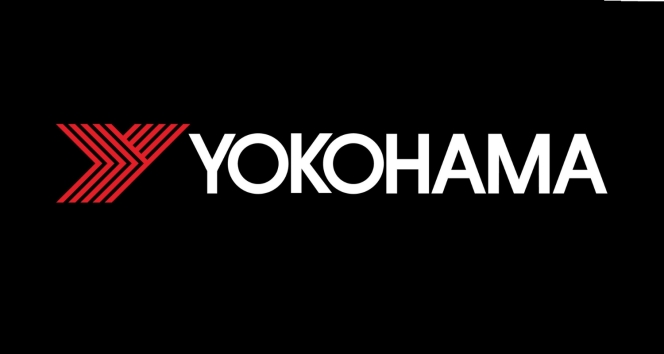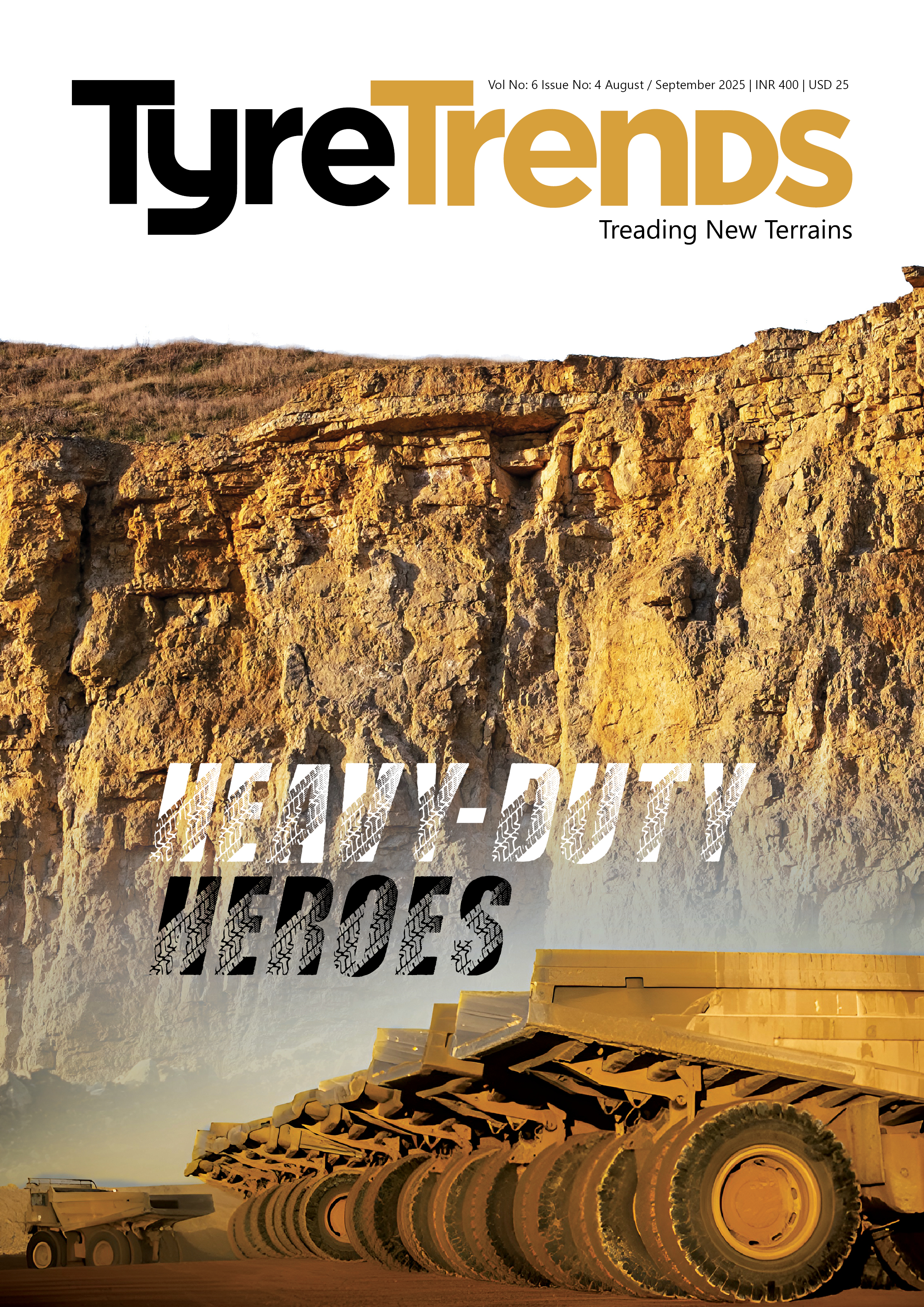Consumer demand never drops off
- By Rommel Albuquerque
- June 16, 2021

 How do you view the changes happening in tyre retailing, and its future course into a digital world?
How do you view the changes happening in tyre retailing, and its future course into a digital world?
I was born and raised in the tyre industry. My dad had a wholesale company along with 13 retail locations so I had the opportunity to work on the wholesale and retail side. Retailers have always faced challenges, whether it be size proliferation where you look back 25 to 30 years ago where 80% of the market was dominated by 10 sizes while today 80% market is dominated by 250 plus sizes. That poses challenges that retailers have to manage because it’s not in their domain, it’s all about tyres and sizes and it’s their specialty.
The biggest challenge that I see retailers being faced with now is the new digital age. It’s out of their comfort zone! They have to rely on marketing themselves through social media platforms and Geofencing. So now retailers have to sit down and think of how they can be different and how can they attract an audience and bring people through the door, rather than how it was before. This is an aspect of the business that is out of their comfort zone. Many do not understand it and have to rely on third party software’s or consultants. The market structure in the US is still predominately driven by independent tyre retailers, where over 65% of the industry is run by ‘Mom and Pop’ shops. Everybody wants to think about the large chains but the bulk of the business is by these independent operators, and they’re competing against these Giants that are trying to gain that customer base.
What strategies does TGI adopt in the current changing business environment?
Size proliferation is a big driver and one of the things that benefits companies such as us Tire Group International, is that we are a large wholesaler with large inventories & large warehouses. The reason for that is we have to stock a lot of tyres because retailers no longer have the luxury to stock tyres. They may have financial constraints, space constraints, etc , to be able to stock all the different sizes in order to service whatever car is coming through one of their doors. So, they have to rely on wholesalers like us to offer them a good solid product range. It all depends on the type of consumer coming in. Once that is satisfied then you have to meet the requirement of getting there on a timely manner to get them those tyres.
One of the things that we have been able to do is to increase the service side of our business. It's really been changing our business. It’s not about just providing tyre support. You have to have great customer service having a great relationship with your customers and being able to deliver to them more than three times a day in-order to offer what they call ‘Hot Shot’ delivery, where you get your tyres within 30 to 60 minutes to the retail location. They are heavily relying on that supply chain to be able to satisfy their retail customers. So as a part of our strategy to bring that all together and meet the needs of today’s market, we have opened up additional smaller distribution centers so we can service regional locations as opposed to having to drive from our main hub to one of our farthest customers almost three hours away. Opening up a location closer to customers has now given us the opportunity to deliver a customer a 30 to 45-minute delivery window rather than having to wait almost a day for delivery. In Latin America which we have invested in, single shop operators and multi branded stores are very prevalent and they rely on fast service and getting tyres to customers in a timely manner and that is something that we will continue to push on.
How much has the pandemic and its impact forced you into bringing in new changes?
The pandemic has taught us many things. Most importantly is has taught us how to lean on our digital platforms and software systems that we’ve been developing over the years. Being forced to use them more and other digital platforms has taught us a lot. Video calling has been a great tool to showcase our product line to dealers from all across. It has definitely opened our eyes to the use of technology and how important it is to have the right technology in the workplace. We felt the first impact of the pandemic when I got a call from our VP of Sales asking if one of our dealers could get a 30-60 stay on his trade receivables as he was being forced to shut down due to having to adhere to CDC guidelines. That was the start. A lot of our customers were asking for more time to sort out and figure out what was really going to happen. The pandemic was affecting all of us and this solidarity came out from everyone. People were very accommodating and understood the situation.
Surprisingly consumer demand never dropped off. For most, if you had a job, you continued to have your revenue stream coming in, but you didn’t go out to eat 2-3 times a week, you weren’t spending money on gas, on a vacation, or going out. You had to stay at home, and this led to consumers having more spending power and wanting to travel locally. Rather than air travel, people started opting for more road trips and so tyre purchases which may have been a faraway thought, now became a front and center and customers had the discretionary income for it.
Manufacturing plants were shutting down but consumer demand never dropped. These plants tried to come back but with workers going back to their hometowns and not being able to travel back, there was suddenly this supply gap in the industry that started to drive the price up but demand kept increasing. Everyone thought that consumers were not going to buy tyres or spend much on them but it was the complete opposite. Even today demand is extremely strong and supply has not caught up with it. Over the last couple of years, we have seen retailers go thought a price decline, but with the market demand increasing they are going through a price incline which is good.
 What is your take on online retailing? What are its advantages as well as disadvantages?
What is your take on online retailing? What are its advantages as well as disadvantages?
We divide our business into many units and the online retail sector is one that has taken off in the last 3-4 years. It is the wave of the future as more and more things become automated and we adopt a ‘buying everything online’ type of world. The challenge with tyres is, you cannot just click and get them to your house, but you have to get them installed. That creates the challenge which people are trying to meet, whereby coupling the service of buying online with mobile service via appointments to get the tyres fitted. These are the challenges faced in the online sector but it is by far the largest growing sector. The online space is the first place where customers go to find out when they should buy a new tyre, what size they need and see what their options are. The challenge is, how do you put your product in front of a consumer or how can you get that consumer into your virtual door. We service a lot of B2B platforms where customers can place their orders and we ship those orders directly to the consumer. We started doing this in 2017 and this has grown by over 400% year over year.
What are the challenges in retailing multi-brand products?
Back in the days there were only single branded tyre retailers because at that time there were only limited tyre sizes. But now with so many tyres sizes available in a particular spectrum, even if you wanted to be a single brand retailer, you wouldn’t have all the tyre sizes that you would need to be able to service every consumer’s needs. This forces you to become a multi brand outlet. It has its own challenges. No particular tyre can be branded as the best as it’s a subjective decision and so as a retailer it depends on how you are going to market it. We as a retailer need to understand what are our objectives. How we tier our products in our portfolio matter.
Which segment of tyres is more in demand than others?
In the US market, with the new import restrictions and import duties on tyres from certain countries, the biggest challenge has come in the passenger and light truck segment. Tyres which were imported and that were once available at a certain price point are now more expensive because of the cost of the duties to import them. It is estimated that with the new duties imposed on tyres imported from Taiwan alone, there is about two and a half percent of the market share of the US that is now priced out of the market. So now there is a tremendous supply gap in the passenger and light truck segment because of this new import law and the duties that have been imposed. This also works as an opportunity for those who have inventory to increase the price a bit. Passenger and light truck segment is where the demand is more but trying to secure product for that segment is now a challenge.
Do customers demand any specific features for the tyres they seek?
For the vast majority of our consumers, the main question in their mind is pricing. The second question is how good is your cheapest tyre. It’s always a mental game of price for quality. Most consumers don’t know a lot about tyres, and most of the time, the lower priced tyres are from brands that they’ve never heard off. Consumers put a lot of trust in the retailer as far as quality vs price go. From a retail side, bridging the gap from price to quality as in safety,is crucial. On the wholesale side, it’s very different. We wholesale and buy tyres on the open market and that’s where competition comes in. Profit margins and pricing plays a big part, bridging the gap between the cost, quality, exclusivity make a difference.
For the most part, general consumers don’t ask for specifics about a particular tyre, like the kind of grip or longevity it offers. But you get specific consumers who are performance oriented. An educated consumers will ask more questions about the benefits each tyre brings. Top US publications in the US ran a survey last year and about less than 20% of the consumers we get come in well informed and are looking for specific features. As per a survey done here in the USA, 80% of the time, a consumer walking in to a retail tyre shop, will buy a tyre that the counter person recommends. Customers also look at what tyre they have already on their car, and feel that those tyres served them well, but according to the survey, customers only left buying the same brand of tyres 30% of the time. 70% of the time, customers bought the tyre that the counter person recommended. So there’s a lot of power in what the counter person recommends.
What is your take on tyre manufacturers doing their own retailing? Does that affect your business?
The first here in the US to get into that was Michelin. They developed their own online platform and then Goodyear and a lot of the Tier1 manufacturers followed. But some have taken a step back. The channel disruption it was creating was more a drag on their business than a benefit. They did create a MAP pricing (Manufacturers Authorised Price). This way they wanted to make sure that their tyres were being sold at the same price across platforms and dealerships. But by setting a ceiling price on a tyre, you’re also setting a ceiling on how much a shop or tyre channel can make. Whereas if I’m selling an in-expensive brand of tyre, I can buy at my cost point and the retailer can sell it at their cost point where both make a profit margin.
There are a lot of dynamics at play. The younger the consumer becomes, when they start buying tyres, the more they’re going to look for online purchasing. The challenge is a retailer’s consumer is becoming younger and becoming more fleet driven with the likes of Uber, Lyft, etc. These fleet buisnesses are becoming more of our consumer base than an individual car owner. The old ways of going to a tyre shop and talking to the guy, having a cup of coffee and talking about tyres is over, the younger generation of buyers want to buy everything online. This is where online providers are trying to bridge the gap between product and service, as you need specialized service as far as tyres go. Automated tyre installation bays is being worked on and I think that will be the future. (TT)
- Yokohama Rubber
- GEOLANDAR X-AT
- All-Terrain Tyres
- Racing Tyres
- FIA Extreme H World Cup
- Hydrogen-Powered Motorsport
Yokohama Rubber To Power FIA Extreme H World Cup With GEOLANDAR Tyres
- By TT News
- September 12, 2025

The Yokohama Rubber Co., Ltd. has been selected as the official tyre supplier for the groundbreaking FIA Extreme H World Cup, the world's first hydrogen-powered motorsport series. The company will supply its GEOLANDAR brand of tyres for the championship, which is scheduled to commence next month in Saudi Arabia. The company will also continue to supply GEOLANDAR tyres for the Extreme E off-road electric vehicle series, which holds its final event on 4–5 October in Saudi Arabia.
Central to both the Extreme H and Extreme E series is a shared mission to advance sustainability and equality. The championships serve as dynamic platforms to promote environmental awareness and demonstrate cutting-edge technologies while also enforcing a strict mandate for gender parity by requiring each team to field one male and one female driver. The Extreme H series will feature eight international teams operating the Pioneer 25, a cutting-edge hydrogen fuel cell vehicle capable of generating 550 horsepower and accelerating from 0 to 100 kmph in 4.5 seconds. The global significance of this new championship is expected to draw a worldwide television audience across multiple continents.
As the predecessor to Extreme H, the Extreme E series utilised the high-performance all-electric Odyssey 21 vehicle. All teams competing in the new hydrogen series will also participate in this final Extreme E event, marking the conclusion of the electric championship as it transitions towards a hydrogen future.
In alignment with the environmental principles of these series, Yokohama Rubber will provide a specially developed prototype tyre based on its GEOLANDAR X-AT model. This tyre has been engineered with a significantly increased ratio of sustainable materials, comprising 38 percent renewable and recycled content. It has also been fortified with enhanced durability characteristics to withstand the unique demands of heavy hydrogen-powered and electric off-road racing vehicles.
Hankook Tire Unveils Future Mobility Innovations At 'Design Innovation Day 2025'
- By TT News
- September 12, 2025

Hankook Tire is advancing its future mobility leadership through strategic open innovation and collaborative design projects. This effort was showcased at the company’s recent Design Innovation Day 2025, held at its Pangyo Technoplex headquarters. The event serves as a platform to present new solutions integrating sustainability, innovation and design while reinforcing partnerships with global technology leaders.
A major focus was the unveiling of two key outcomes from Hankook’s ongoing Design Innovation Project. The first was ‘Sustainable Concept Tyre’, an embodiment of the company’s ESG vision. Developed using advanced 3D printing technology, it is constructed from renewable and recycled materials. Its distinctive organic design was realised in collaboration with Harvestance using specialised engineering software.
The second reveal was the WheelBot 2, a multi-directional mobility platform developed with robotics startup CALMANTECH. This advanced robotic wheel system, equipped with tri-axial spherical tyres, demonstrates new possibilities for movement. Its potential was illustrated through a live demonstration of the PathCruizer, a two-seater pod concept powered by the WheelBot technology.
Beyond product reveals, the event highlighted Hankook’s commitment to knowledge sharing, featuring a presentation on 3D printing advancements from LG Electronics. These collaborations are central to Hankook’s strategy of strengthening its technology leadership. Since 2012, the company has partnered with world-renowned design universities and technology firms, consistently earning prestigious international design awards and solidifying the premium stature of its global brand.
CEAT Cuts Tyre Prices Across Portfolio Following GST Rate Reduction
- By TT News
- September 12, 2025

Indian tyre maker to pass full benefit of tax cuts to customers from 22 September
CEAT Limited said on Thursday it would reduce prices across its entire tyre range following the Indian government’s decision to cut goods and services tax (GST) rates on tyres, with the full benefit being passed on to customers.
The Mumbai-based tyre manufacturer said new prices would take effect from 22 September, covering commercial, agricultural, passenger vehicle and two-wheeler segments.
India’s 56th GST Council meeting approved significant reductions in tax rates for the tyre industry. GST on new pneumatic tyres was cut to 18% from 28%, whilst tractor tyres and tubes will attract a reduced rate of 5%.
“We thank the Government of India and the GST Council for their timely and progressive decision to rationalise tax rates in the tyre sector,” said Arnab Banerjee, Managing Director & CEO of CEAT Limited.
“The reduced GST slabs will greatly benefit the tyre industry and consumers alike. Not only will it lower the cost of owning and operating a vehicle for customers across various segments, but by making tyres more affordable to replace, it will also make our roads safer.”
Banerjee added the move would “spur formalisation and greater compliance, while also fostering sustainable growth in the sector.”
The GST rate cuts represent a significant policy shift for India’s automotive sector, where high taxation has been a longstanding concern for manufacturers and consumers.
Yokohama Rubber Recognised As ‘DX Certified Business Operator’ By Japan’s METI
- By TT News
- September 12, 2025

The Yokohama Rubber Co., Ltd. has been officially recognised as a DX Certified Business Operator by Japan's Ministry of Economy, Trade and Industry (METI). The designation, which was granted on 1 September 2025, identifies companies that are thoroughly prepared for digital transformation as outlined by the Digital Governance Code.
This certification acknowledges Yokohama Rubber's comprehensive strategy for digital transformation, which is built on three core objectives: advancing business strategy, contributing to sustainability and reinforcing its IT infrastructure. Central to this effort is the company's proprietary AI framework, HAICoLab (Humans and AI ColLaborate), which drives group-wide digital initiatives. These include improving productivity, innovating processes, developing digital talent and building a global cloud-based IT system. The certification confirms that the company's efforts not only meet METI's stringent criteria but also demonstrate appropriate disclosure of information to its stakeholders.
Moving forward, the company said it will continue to leverage data from its entire value chain to adapt to a dynamic business environment. The company aims to enhance customer value, pursue sustainable innovation and transform its corporate culture to strengthen its competitive position and ensure long-term growth.






Comments (0)
ADD COMMENT